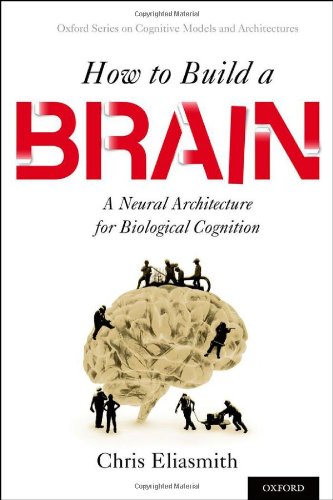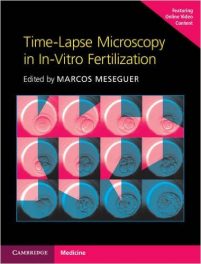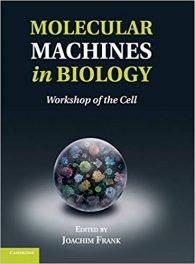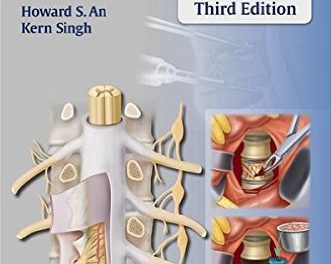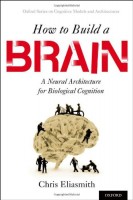 Author: Chris Eliasmith
Author: Chris Eliasmith
Publisher: Oxford University Press – 456 pages
Book Review by: Nano Khilnani
Some of the brain functions that humans are capable of are: attention, learning, memory, motor control, planning, reasoning, semantics, and syntax.
Researchers in the fields of artificial intelligence, neuroscience, and psychology have been working on building models to explain why human brains are adaptive and flexible in learning, and are capable of each of the functions we’ve mentioned above.
But the author Chris Eliasmith introduces a new integrated cognitive model called the Semantic Pointer Architecture or SPA Provides, “a set of tools for constructing a wide range of biologically constrained perceptual, cognitive and motor models.”
Why is the SPA important? As Lawrence W. Barsalou, a professor in the Department of Psychology at Emory University describes it, this is “a compressed neural representation that can stand as a symbol for a more detailed semantic state or be decompressed to reproduce it in compositional cognitive processes.”
“Ambitious state-of-the art modeling grounds the semantic pointer architecture in populations of spiking neurons, providing concrete neural accounts of high-level processes, including attention, learning, memory, syntax, semantics, and reasoning. Along with offering a powerful new approach for integrating cognition and neuroscience, Eliasmith provides detailed technical accounts of his system, with accompanying software that will serve both students and fellow modelers well.”
This book contains numerous charts, illustrations, and tables to help the reader understand the material. We will say that the subject of the human brain and how it is capable of thinking, analyzing, making judgments, arriving at conclusions and making decisions, is not an easy one at all. But this book makes the complex nature of the brain clearer for laymen as well as neuroscientists.
Its material is organized in two main Parts with 10 chapters, namely:
Part I: How to Build a Brain
1. The Science of Cognition
2. An Introduction to Brain Building
3. Biological Cognition: Semantics
4. Biological Cognition: Syntax
5. Biological Cognition: Control
6. Biological Cognition: Memory and Learning
7. The Semantic Pointer Architecture
Part II: Is That How You Build a Brain?
8. Evaluating Cognitive Theories
9. Theories of Cognition
10. Consequences and Challenges
The author provides a very extensive 39-page Bibliography that lists numerous materials as references for further study and exploration on the highly complex nature of the human brain and its many faculties.
This is a definitive and pioneering work on the study of the human brain because Eliasmith presents a unified theory of cognition using the Semantic Pointer Architecture or SPA.
Chris Eliasmith, PhD, holds a Canada Research Chair in Theoretical Neuroscience and is Director of the Centre for Theoretical Neuroscience at the University of Waterloo. He is jointly appointed in Philosophy and Systems Design Engineering, and cross-appointed to Computer Science and Psychology.

